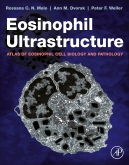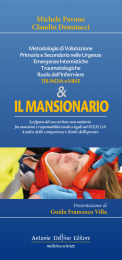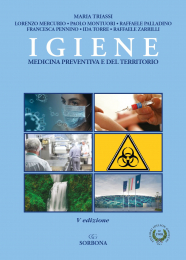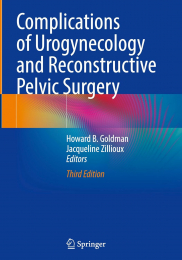Non ci sono recensioni
DA SCONTARE
| Features: |
|
SECTION I - THE CELL BIOLOGY OF HUMAN EOSINOPHILS
Chapter 1 Introduction
Chapter 2 Mature Eosinophils - General Morphology
2.1 Overview
2.2 Nucleus
2.3 Secretory Granules
2.4 Lipid Bodies
2.5 Eosinophil Sombrero vesicles (EoSVs)
2.6 Other Organelles and Structures
2.6.1 Endoplasmic Reticulum
Chapter 3 Eosinophils as Secretory Cells
3.1 Overview
3.2 Classical and Compound Exocytosis
3.3 Piecemeal Degranulation
3.4 Cytolysis
3.5 Extracellular Vesicles Production
Chapter 4 Eosinophil Activation
4.1 Overview
4.2 Ultrastructural Changes of Secretory Granules
4.3 EoSV Formation
4.4 Lipid Body Formation
4.5 Shape Changes
4.6 Extracellular Vesicle Production
Chapter 5 Subcellular Localization of Immune Mediators and other Proteins
5.1 Overview
5.2 Major Basic Protein
5.3 Cytokines
5.4 Receptors
5.5 Tetraspanins
5.6 Galectin-10
5.7 Enzymes Involved in the Formation of Leukotrienes
Chapter 6 Eosinophil Cell Death
6.1 Overview
6.2 Cytolytic Morphology - General Aspects
6.3 Cytolytic Morphology - ETosis
6.4 Apoptotic Morphology - General Aspects
Chapter 7 Immature Eosinophils
7.1 Overview
7.2 About Immature and Mature Eosinophil Granules
7.3 Maturation stages of human eosinophils characterized by TEM
SECTION II - EOSINOPHILS IN HUMAN DISEASES
Chapter 8 Eosinophil-associated diseases
8.1 Overview
8.2 Allergic Airway Diseases
8.3 Skin Disorders
8.4 Hypereosinophilic Syndrome (HES)
8.5 Eosinophilic Granulomatosis with Polyangiitis (EGPA)
8.6 Gastrointestinal Disorders
8.7 Infectious Diseases
8.8 Tumors
8.9 Charcot-Leyden Crystals (CLCs) Formation
SECTION III - THE CELL BIOLOGY OF MOUSE EOSINOPHILS
Chapter 9 Ultrastructure of Mouse Eosinophils
9.1 Overview
9.2 Mature Mouse Eosinophils: General Morphology
9.3 Immature Mouse Eosinophils
9.4 Activation and Degranulation of Mouse Eosinophils
9.5 Mice in the Context of EADs




